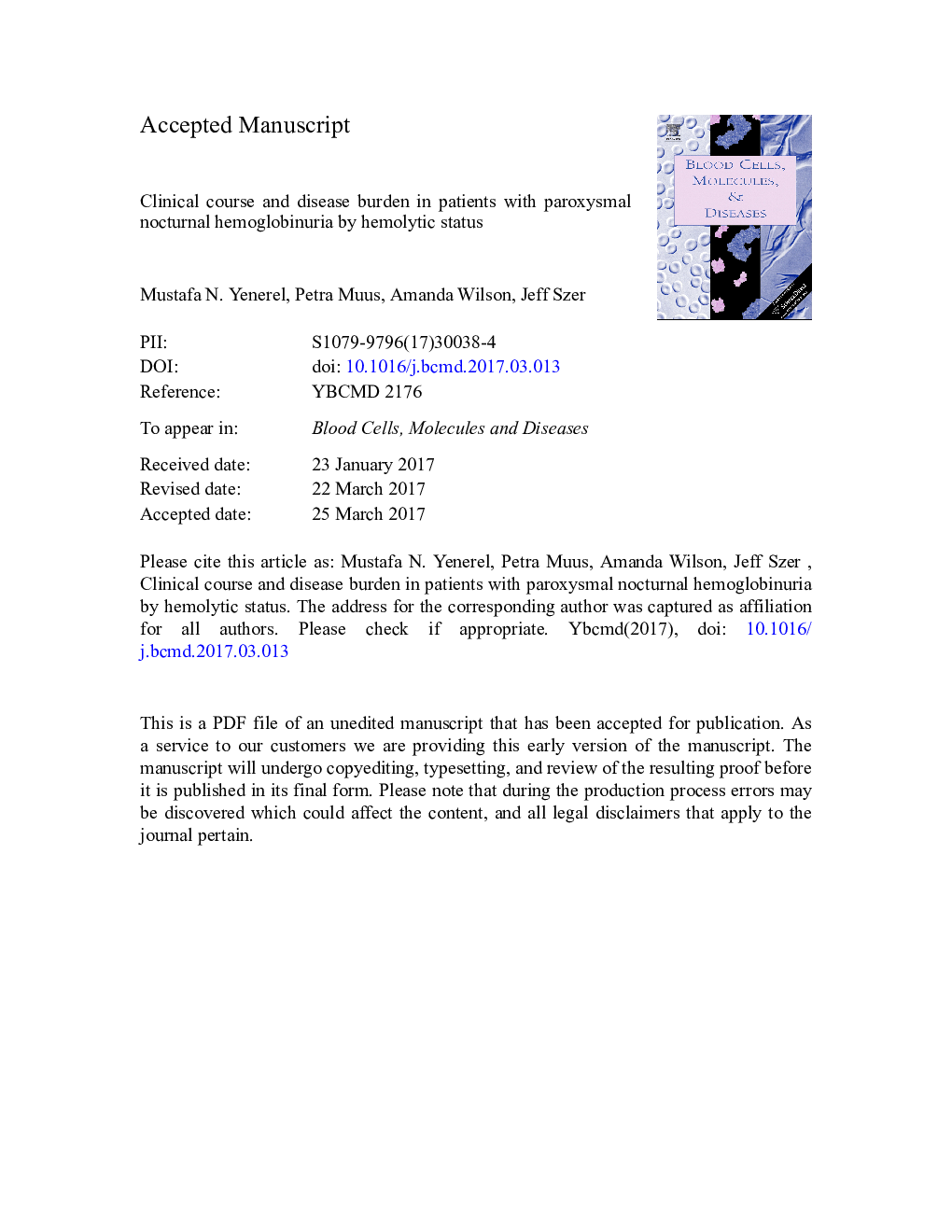| کد مقاله | کد نشریه | سال انتشار | مقاله انگلیسی | نسخه تمام متن |
|---|---|---|---|---|
| 5591449 | 1570395 | 2017 | 27 صفحه PDF | دانلود رایگان |
عنوان انگلیسی مقاله ISI
Clinical course and disease burden in patients with paroxysmal nocturnal hemoglobinuria by hemolytic status
ترجمه فارسی عنوان
دوره بالینی و بار بیماری در بیماران مبتلا به هموگلوبینوری شبانه پراکسیسلامی با وضعیت همولیتیک
دانلود مقاله + سفارش ترجمه
دانلود مقاله ISI انگلیسی
رایگان برای ایرانیان
کلمات کلیدی
هموگلوبینوری شب ادراری پراکسیاسمی، لاکتات دهیدروژناز، همولیز، ترومبوز علائم،
موضوعات مرتبط
علوم زیستی و بیوفناوری
بیوشیمی، ژنتیک و زیست شناسی مولکولی
زیست شناسی مولکولی
چکیده انگلیسی
Disease characteristics of patients enrolled in the International PNH Registry were assessed during two follow-up periods based on hemolytic status while untreated with eculizumab: Non-hemolytic cohort: follow-up time defined as time from disease start until last reported untreated lactate dehydrogenase (LDH) value < 1.5 Ã upper limit normal (ULN); Hemolytic cohort: follow-up time defined as time from LDH â¥Â 1.5 Ã ULN at or post-disease start, to most recent untreated follow-up. A total of 1012 patients met criteria for the Non-hemolytic cohort and 1565 patients for the Hemolytic cohort; median (min, max) years of follow-up were 2.2 (0.0, 54.2) and 1.2 (0.0, 37.2) years, respectively. Annual rate of thrombotic events (TEs) was lower in the Non-hemolytic than Hemolytic cohort (0.01 events/person-year vs. 0.03 events/person-year; p < 0.001). Mortality was lower in the Non-hemolytic cohort than the Hemolytic cohort (0.1% (1 death) vs. 1.8% (22 deaths); p < 0.001). While elevated risks for TEs were observed in patients with hemolysis, many TEs were also observed in patients without hemolysis. As thrombosis is the leading cause of mortality in patients with PNH, this real-world analysis highlights the importance of awareness and monitoring for TEs in patients with PNH regardless of hemolytic status.
ناشر
Database: Elsevier - ScienceDirect (ساینس دایرکت)
Journal: Blood Cells, Molecules, and Diseases - Volume 65, June 2017, Pages 29-34
Journal: Blood Cells, Molecules, and Diseases - Volume 65, June 2017, Pages 29-34
نویسندگان
Mustafa N. Yenerel, Petra Muus, Amanda Wilson, Jeff Szer,
